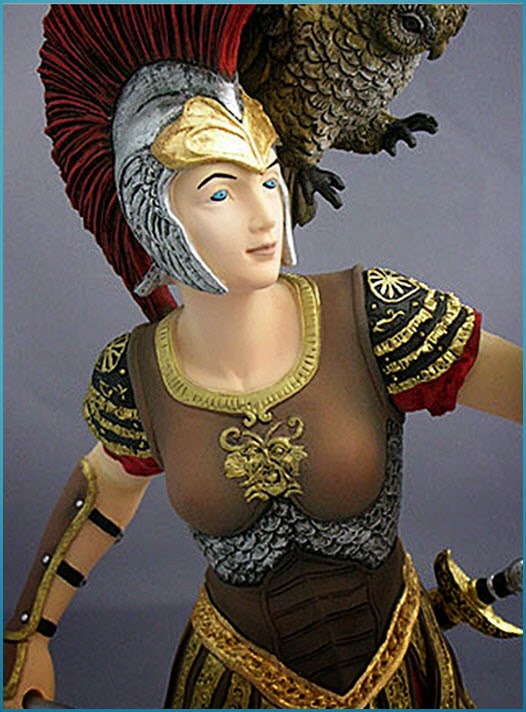 |
| ARTEMISIA OF HALICARNASSUS |
(c. 520–450 B.C.E.) Halicarnassus queen and warrior.
“Of the other lower officers I shall make no mention,” wrote the Greek historian Herodotus (c. 485–425 B.C.E.) “... but I must speak of a certain leader named Artemisia, whose participation in the attack upon Hellas, notwithstanding that she was a woman, moves my special wonder.” The warrior Queen Artemisia joined her ally, the Persian king Xerxes (r. 486–465 B.C.E.), in the battle of Salamis against the Greeks in 480 B.C.E. She was one of Xerxes’ leading military advisers and is thought to be the first woman sea captain. Before the battle of Salamis, Artemisia I wisely advised Xerxes not to engage the Greek naval power, since the loss of his fleet would result in the sacrifice of his ground army as well. Unfortunately, Xerxes, even as he praised Artemisia’s words, took the advice of his other generals who advocated battle. After the battle, Artemisia was commended as the best tactician in Xerxes’ army. She was the only naval officer to survive the defeat of the Persian armada. Herodotus commended Artemisia for her courage, or andreia in the Greek language. To exhibit andreia for a woman was literally impossible, since the word connoted manliness.
Artemisia, the daughter of Lygdamis, a Halicarnassian, and a Cretan mother, had been named after the Greek warrior goddess Artemis, sister to the Greek god Apollo. She had married the king of Halicarnassus in 500 B.C.E. (His name has been lost. Most historians believe he died not long after the marriage.) Artemisia assumed the throne upon his death, becoming Artemisia I, Queen of Halicarnassus. The archenemy of Harlicarnassus, the nearby island of Rhodes (where Hester Stanhope was shipwrecked more than a thousand years later) took advantage of the king’s death to attack what they viewed as a weak female ruler. A Rhodesian war ship attacked Artemisia I at a fortress in the town of Halicarnassus soon after Artemisia had been crowned. The queen fought back gallantly. She divided her troops in half, leaving one squadron in ambush in the town, and led the remaining troops out of the city. She instructed the townspeople to surrender when the Rhodesians approached the city gate.
When Artemisia received the signal that the Rhodesians had entered the city and reached the central market square, she launched a surprise attack against the Rhodesian ship anchored in the bay. Capturing — but not destroying — the ship, she advanced toward the city center. Meanwhile, her ambushed soldiers sprang up out of hiding, trapping the Rhodesians between Artemisia’s two forces. The brilliant strategy worked, and the surviving Rhodesians limped back to their island.
Not satisfied, however, Artemisia pursued her offensive by sailing the captured ship back to Rhodes. As the ship approached the island, she hoisted victory flags around the deck. Fooled into thinking that the Rhodesian army had triumphed, the Rhodesians rushed to greet their heroes. Artemisia quickly routed them, handily capturing the entire island.
Artemisia’s quick intelligence served her well in the battle of Salamis. King Xerxes had gathered 150,000 warriors (one of the largest forces gathered in antiquity) and a navy of more than 600 ships in preparation to conquer Greece. Faced with this vast force, many Greek islands either chose to remain neutral or to side with Xerxes. The southern Greek states opted to defend the mainland.
In the spring of 480 B.C.E., Xerxes launched his invasion. His strategy was to march into Greece, destroy Athens, defeat the Greek army, and subject the Greek citizens to his rule. But the very vastness of his army proved to be a handicap; it was difficult to supply and control.
The Greek army, though outnumbered, was better trained and equipped. The Persian invasion of Thermopylae succeeded, as the Greek army there could not resist. The Persians went on to occupy Athens, although its population had been evacuated to Salamis. The narrow strait between the Greek mainland and the island of Salamis provided the backdrop to the most decisive battle in the war between Greece and Persia.
The Persian fleet, which was needed to outflank Greek defenses on the Isthmus of Corinth, was now ambushed and destroyed by the Greek navy at Salamis. Xerxes watched the battle from his golden throne perched above the shore. Artemisia found herself trapped between the Greek triremes (ancient Greek warships with three banks of oars on each side). She calmly and expertly rammed one of her own disarmed ships blocking her exit and escaped (but not before she rescued Xerxes’ admiral brother). Believing her to be an ally, the trireme dropped its pursuit. While onshore, Xerxes declared “My men have become women, and women men.”
Since it had become clear that Greece could not now be conquered in a single campaign, Xerxes returned to Asia with half of his army; the remaining troops wintered in Greece only to be defeated decisively by a Greek army the following year. The Persian threat to Greece had been stopped.
As the only one of Xerxes’ naval officers to survive the defeat of the Persian armada, Artemisia won Xerxes’ praise as his best general, along with a complete suit of armor.
By Erika Kuhlman in "A to Z of Women in World History", Facts On File, Inc., New York, 2002, excepts pp. 30-31. Adapted and illustrated to be posted by Leopoldo Costa.